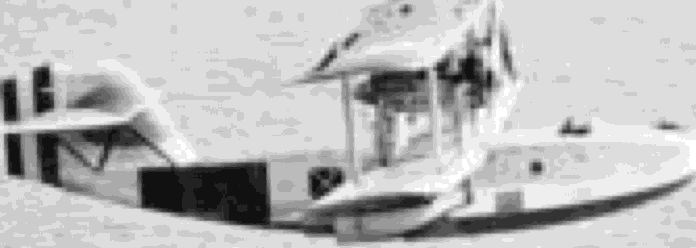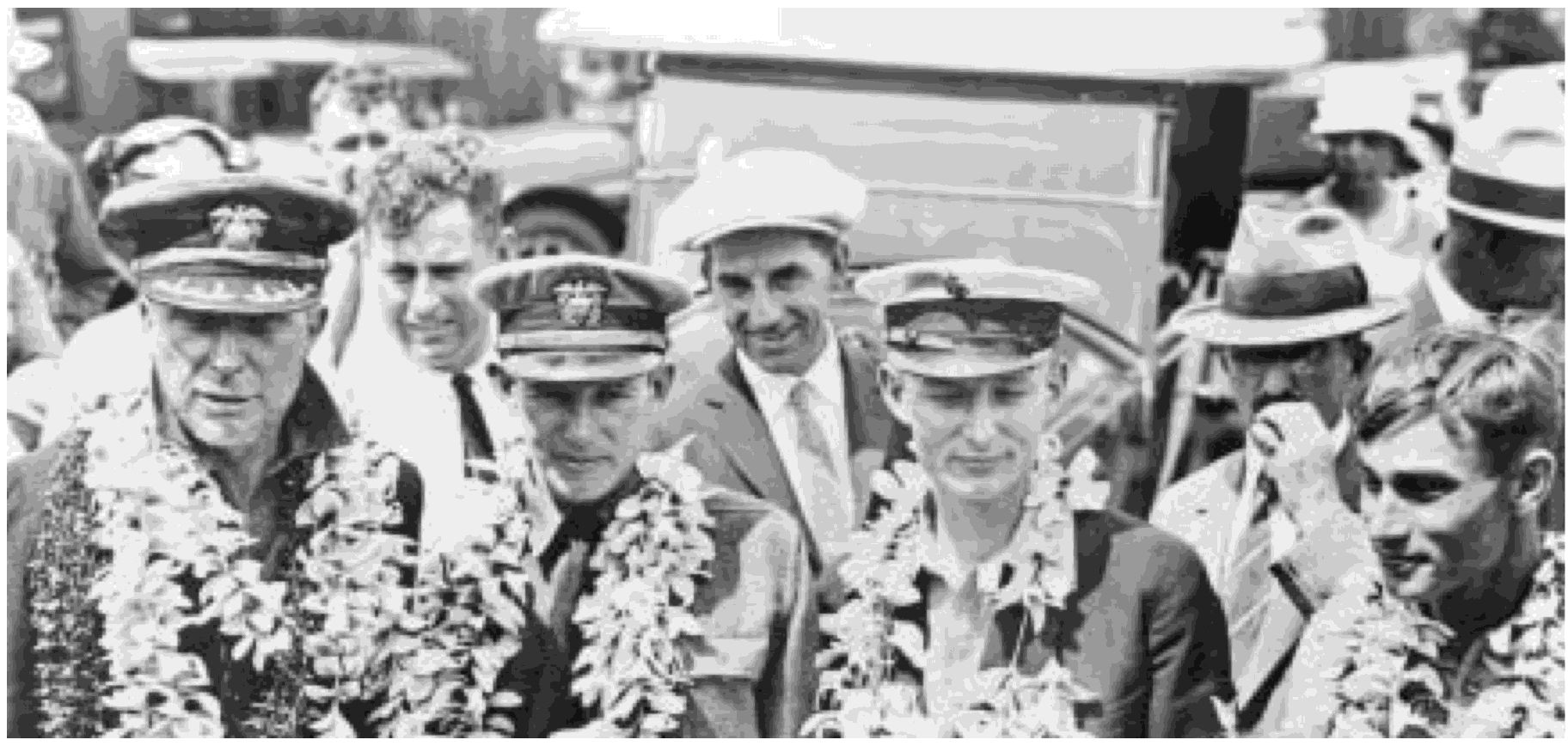

62
UNITED STATES NAVAL AVIATION
1910-1995
1925-Contin ued
8 April
Almost two years after the special aviation uni-
form had been abolished, new uniforms of forestry
green for winter and khaki for summer were authorized
for Naval Aviators, Observers, and other officers on duty
involving flying. Although there were minor modifica-
tions to the original design in later years, this uniform, in
khaki, was adopted for the entire Navy in 1941.
1-2 May
Lieutenants Clarence H. Schildhauer and
James R. Kyle, on a test flight over Philadelphia, Pa.,
of the PN-9 manufactured at the Naval Aircraft Factory,
broke the world endurance record for Class C sea-
planes, remaining in the air for 28 hours, 35 minutes,
27 seconds. The plane, a metalhulled flying boat
equipped with two Packard engines, was used by
Commander John Rodgers later in the year on his
record flight toward Hawaii.
-
,
.. t
./'
Rodger's PN-9 on mainland to Hawaii fJjght, forced down after
record distance, sailed 450 miles to Kaui 426936
5 May
The Secretary of the Navy approved reorgani-
zation of certain departments at the Naval Academy as
required to make aviation an integral part of the cur-
riculum; the establishment of a program, beginning
with the Class of 1926, to give three months of special
ground and flight instruction to all midshipmen; and
additional instruction as necessary to qualify each
graduate as an aviator or observer during the first two
years after graduation.
29 May
The standard color of naval aircraft was
modified: hulls and floats of seaplanes were to be
painted navy gray; wings, fuselages, landing gear, etc.,
aluminum color; and the top surface of upper wings,
stabilizers and elevators, orange-yellow.
17 June
The Naval Air Detail, under Lieutenant
Commander Richard E. Byrd of the MacMillan
Expedition, sailed from Boston with three Loening
amphibians aboard
Peary
(DD 340).
Bowdoin
(a civil-
ian research ship) joined
Peary
(DD 340) off Wiscasset,
Maine, and after a 3,000-mile voyage, the expedition
reached Etah in North Greenland on 1 August to begin
an aerial exploration of the area that covered 30,000
square miles before the end of the month.
1 July
When a law, enacted 28 February, became
effective, the Naval Aviation Reserve began to orga-
nize into 10 squadrons of four divisions each.
Authorized squadron complements for each of three
scouting and three bombing squadrons were estab-
lished at 40 officers and 130 men, and for each of four
fighting squadrons at 18 officers and 20 men.
1 September
Commander John Rodgers, Lieutenant
Byron 1. Connell and a crew of three in a PN-9,
A traditional
Hawaiian
greeting to
Rodgers and
crew at Kaui
184669
 |
16 |
 |